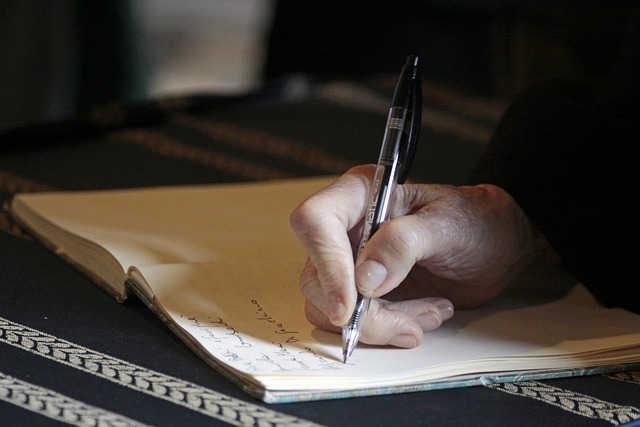When considering how best to protect the financial future of a vulnerable loved one, it’s natural to explore all available options. One key consideration that often arises is whether a Vulnerable Person Trust can shield assets from creditors. Whether you are planning for a family member with a disability, mental health issues, or age-related vulnerabilities, understanding the scope of a Vulnerable Person Trust is essential—especially if there are concerns about potential creditors in the picture.
At Blackstone Solicitors, we assist clients across England and Wales in navigating the complex legal framework surrounding trusts and asset protection. In this article, we’ll address whether Vulnerable Person Trusts can help protect assets from creditors, how these trusts work, and what limitations they might have.
Please click here to find out more about our Wills and Lasting Power of Attorney Services.
Free Initial Telephone Discussion
For a free initial discussion on how we can help you deal with the legal implications of creating a Disabled Person Trust, get in touch with us today. We are also experienced in dealing with all aspects of Wills and Probate and we will review your situation and discuss the options open to you in a clear and approachable manner. Early expert legal assistance can help ensure you avoid the stress of dealing with these issues on your own. Simply call us on 0345 901 0445 or click here to make a free enquiry and a member of the team will get back to you.
What is a Vulnerable Person Trust?
Before delving into how a Vulnerable Person Trust might impact creditor claims, let’s first clarify what a Vulnerable Person Trust is.
A Vulnerable Person Trust is a specific type of trust designed to hold and manage assets for the benefit of a person who is classed as “vulnerable.” In legal terms, a vulnerable person could be:
- Someone with a mental or physical disability that prevents them from managing their finances effectively.
- A person suffering from conditions like dementia, which impair their decision-making capacity.
- A child or adult with a severe physical or learning disability.
The main purpose of a Vulnerable Person Trust is to ensure that the assets set aside for the vulnerable person’s care are managed properly and used in their best interest. Trustees, who are appointed to manage the trust, have the responsibility of ensuring that the funds are used appropriately to meet the beneficiary’s needs.
The Role of Trusts in Asset Protection
Trusts are often viewed as a potential method for protecting assets, particularly in cases where there are concerns about future claims or creditors. However, the ability of a trust to protect assets from creditors depends on a range of factors, including how the trust is structured, the timing of its creation, and the nature of the creditors’ claims.
Can a Vulnerable Person Trust Protect Assets from Creditors?
A Vulnerable Person Trust, like other types of trusts, can offer some level of asset protection, but it’s important to understand the limitations. Below, we’ll break down some key considerations that affect whether such a trust can shield assets from creditors.
- Ownership of the Assets
One of the primary reasons trusts are seen as a form of asset protection is that once assets are placed into a trust, they no longer legally belong to the person who created the trust (the settlor). Instead, they are held by the trust for the benefit of the vulnerable person.
In theory, this separation of ownership can provide some protection from creditors. For example, if the vulnerable person themselves owes money to creditors, the assets within the trust may not be accessible to satisfy those debts, as they do not legally belong to the vulnerable person.
However, this protection is not absolute, and there are circumstances in which creditors may still make a claim against the trust’s assets.
- Fraudulent Transfers and Insolvency Law
One of the biggest misconceptions about trusts is that they offer blanket protection from creditors. The reality is that if the trust was set up with the intention of avoiding creditors—particularly if the settlor was insolvent or facing financial difficulty at the time—creditors may have grounds to challenge the transfer of assets into the trust.
Under UK insolvency law, if a trust is created specifically to avoid paying existing or foreseeable debts, it may be considered a fraudulent transfer. In such cases, the courts have the power to undo the trust and return the assets to the settlor’s estate so that creditors can be paid.
In practice, this means that if you’re setting up a Vulnerable Person Trust with the primary aim of avoiding creditors, it’s unlikely to provide the protection you’re seeking. The timing and intention behind the creation of the trust are critical in determining whether it will offer any safeguard against creditor claims.
- Protection for the Vulnerable Person’s Creditors
If the vulnerable person themselves has creditors, it’s important to understand how a Vulnerable Person Trust may impact those claims. Since the assets in the trust belong to the trust and not to the vulnerable person, they are generally out of reach of the vulnerable person’s creditors. This can be particularly beneficial in ensuring that the vulnerable individual’s financial support is not depleted by debts they may have incurred.
However, this does not apply if the trust is designed in a way that gives the vulnerable person direct access to the trust’s assets. If the vulnerable person has significant control over the trust (for example, if they are allowed to withdraw funds at will), creditors may argue that the assets should be treated as the vulnerable person’s own, thereby making them accessible to settle debts.
To avoid this situation, the trust needs to be carefully structured so that the trustees have full control over how and when the assets are distributed to the vulnerable person.
- Timing of the Trust’s Creation
Timing is a crucial factor in determining whether a Vulnerable Person Trust can help protect assets from creditors. If the trust is established well in advance of any creditor issues or financial difficulties, it is more likely to offer some level of protection.
By contrast, if a trust is set up after a debt has been incurred or when the settlor is already facing financial challenges, creditors may challenge the trust under bankruptcy or insolvency rules. The courts have wide powers to investigate transactions made shortly before insolvency, and they can potentially reverse such transactions if they believe they were made to avoid paying creditors.
Therefore, if you are considering setting up a Vulnerable Person Trust, it’s wise to do so as part of a long-term financial planning strategy, rather than in response to immediate financial concerns.
- Discretionary Nature of Vulnerable Person Trusts
A Vulnerable Person Trust is usually set up as a discretionary trust. In a discretionary trust, the trustees have the power to decide when and how much money is paid out to the beneficiary, rather than the beneficiary having an automatic right to the assets.
This discretionary nature can add an additional layer of protection. Since the vulnerable person does not have an automatic right to receive funds, creditors may find it more difficult to make a claim against the trust. However, this also depends on the specific circumstances of the case and how the trust is managed.
How Can You Set Up a Vulnerable Person Trust?
If you are considering a Vulnerable Person Trust to protect a loved one’s financial future, it’s essential to get the right legal advice from the start. At Blackstone Solicitors, we assist clients across England and Wales in setting up these trusts, ensuring that they are structured properly and in compliance with legal requirements.
Here are the general steps involved in setting up a Vulnerable Person Trust:
- Assess Eligibility: First, ensure that the person you’re setting up the trust for qualifies as a vulnerable person under UK law.
- Choose Trustees: The trustees will manage the assets in the trust, so it’s important to choose individuals or professionals who are trustworthy and capable of making sound decisions.
- Draft the Trust Deed: The trust deed is the legal document that outlines how the trust will operate, including how the assets will be managed and distributed.
- Transfer Assets: Once the trust is set up, you’ll need to transfer the relevant assets (such as money, property, or investments) into the trust.
- Ongoing Management: The trustees will manage the assets on an ongoing basis, making decisions about how and when to distribute funds to the vulnerable person.
How we can help
We have a proven track-record of helping clients create Trust. We are a multidisciplinary firm and have all the expertise inhouse to satisfy the most exacting requirements of our clients. We will guide you through all the necessary legal due diligence in a comprehensive and timely manner. We firmly believe that with the right solicitors by your side, the entire process will seem more manageable and far less daunting.
How to Contact Our Wills and Probate Solicitors
It is important for you to be well informed about the issues and possible implications of creating a Trust. However, expert legal support is crucial in terms of ensuring your wishes are met as you would want them to be.
To speak to our Wills and Probate solicitors today, simply call us on 0345 901 0445, or click here to make a free enquiry. We are well known across the country and can assist wherever you are based. We also have offices based in Cheshire and London.
Disclaimer: This article provides general information only and does not constitute legal advice on any individual circumstances.



